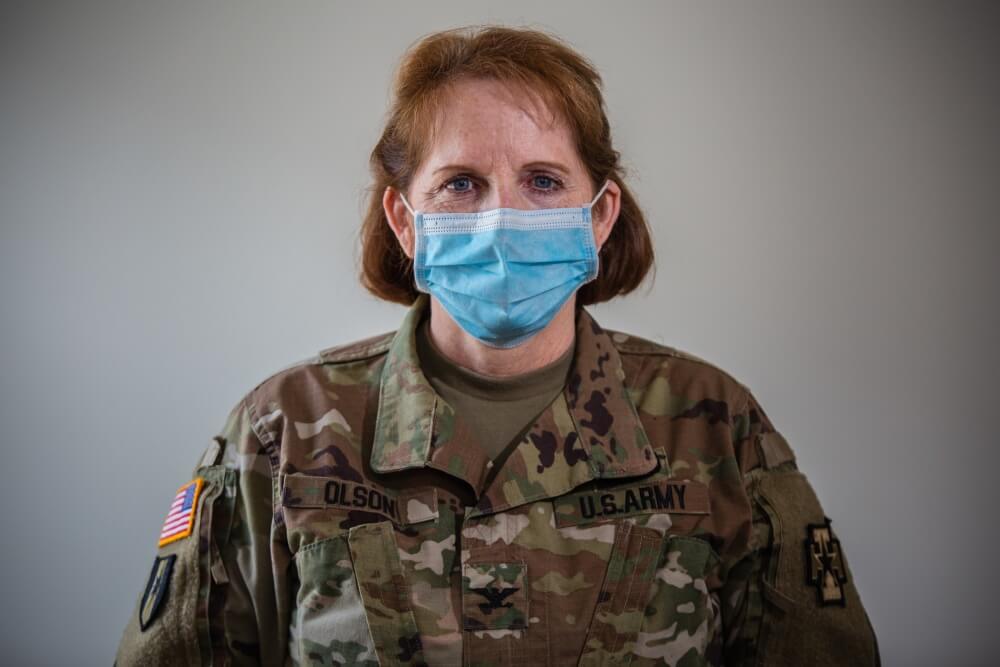A short-notice stateside deployment reveals uncertainty faced by soldiers in COVID-19 fight.
The Urban Augmentation Medical Task Force (UAMTF) is a specialized group of 85 personnel that deployed to the northeastern U.S. to provide a range of capabilities. Army Reserve Col. Patricia Olson, whose two daughters also serve in the Army, leads medical personnel at a hospital co-located along a high commute route to New York. The facility has seen its fair share of patients.
“What we saw was gratitude, in the staff and within ourselves knowing we have made a difference,” Olson said.
She compares the experience stateside with prior missions overseas at military facilities. Deployed alongside her is a behavioral health team, ready to disrupt the cycle of trauma before roots take hold. Olsen grimly described the task of sitting with patients in their final moments, providing emotional support as they are separated from family. An act not foreign to medical staff but carrying weight for any human faced with the duty.
Amongst the gravity that comes with working on the front lines of a pandemic, finding positivity may be challenging but not impossible.
“I have never experienced so many government resources working together like I’m seeing now. We are all a team,” Olson said.
And like others, COVID-19 has affected her life personally. The quick response of the UAMTF team and overall stop movement order issued by the DOD left one of Olson’s daughters out of a keynote speaker at graduation, while waiting for Basic Officer Leaders Course and orders to her first duty station at Fort Bragg, North Carolina.
“As a mother, it’s all OK for me to be affected by these things, but when it is your kid’s turn, that’s a different story,” says Olson who is eager to meet with both daughters sheltering in place together.
Capt. Delaney Ferguson, another task force member, is an RN working directly with COVID patients. Her fiancé was planning to propose, but since she was tasked to deploy within a few days he popped the question on the spot.
“I had roughly 36 hours from the time I got the call to the time I was leaving. I called my now fiancé, who thankfully has perspective as an airman, to let him know the timeline. When I got home, the door was locked and the sign, which was gifted to us by family to hang once we were engaged, was hanging. He came outside and proposed right there,” Ferguson said.
The joy of engagement has also been a source of hope for Ferguson — and for co-workers who she shares the story with. It is a welcome reset for a team that had to adapt quickly for its mission.
“We became orientated among the organic hospital staff within a matter of two days,” Ferguson said. “We came together as a whole making things happen and adapting quickly to respond. Floors were converted, single rooms turned to double, and more ICU rooms became operational.”
She adds that patient care does not end at discharge from the hospital.
“We must provide families with the education to properly isolate patients coming home to replicate a true quarantine, which could last an additional 14 days,” Ferguson said.
As the task force rounds the corner into what all hope is the final stretch of their stay, Olson, Ferguson and the entire team from 811-1 UAMTF will also be required to undergo their own quarantine before resuming everyday life.

